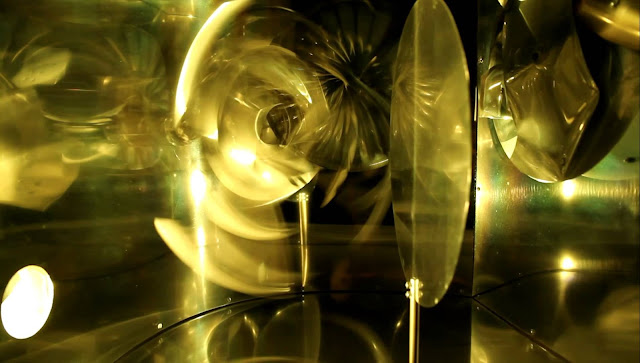Nicolas Schöffer (Hungarian: Schöffer Miklós; 6 September 1912 — 8 January 1992) was a Hungarian-born French cybernetic artist.He was born in Kalocsa, Hungary and resided in Paris from 1936 until his death in Montmartre in 1992. His interest in artistic dynamism began with studying artists concerned with opening up the static three-dimensional sculptural form to a fourth dimension of time and motion. And this was the intention of Schöffer as well.
Schöffer benefited from cybernetic theories (theories of feedback systems (interactivity) primarily based on the ideas of Norbert Wiener (1894–1964)) in that they suggested to him artistic processes in terms of the organization of the system manifesting it (e.g., the circular causality of feedback-loops). For Schöffer, this enabled cybernetics to elucidate complex artistic relationships from within the work itself.
Schöffer benefited from cybernetic theories (theories of feedback systems (interactivity) primarily based on the ideas of Norbert Wiener (1894–1964)) in that they suggested to him artistic processes in terms of the organization of the system manifesting it (e.g., the circular causality of feedback-loops). For Schöffer, this enabled cybernetics to elucidate complex artistic relationships from within the work itself.
His CYSP 1 (1956) is considered the first cybernetic sculpture in art history in that it made use of electronic computations as developed by the Philips Company. The sculpture is set on a base mounted on four rollers, which contains the mechanism and the electronic brain. The plates are operated by small motors located under their axis. Photo-electric cells and a microphone built into the sculpture catch all the variations in the fields of color, light intensity and sound intensity. All these changes occasion reactions on the part of the sculpture.
Consequently, his kinetic sculptural compositions were able to parallel the work of Warren McCulloch and his adaptation of cybernetics in formulating a creative epistemology concerned with the self-communication within an observer's psyche and between the psyche and the surrounding environment. This is the primary usefulness of cybernetics in studying the supposed subject/object polarity in terms of artistic experience.Wikipedia
Consequently, his kinetic sculptural compositions were able to parallel the work of Warren McCulloch and his adaptation of cybernetics in formulating a creative epistemology concerned with the self-communication within an observer's psyche and between the psyche and the surrounding environment. This is the primary usefulness of cybernetics in studying the supposed subject/object polarity in terms of artistic experience.Wikipedia












No comments:
Post a Comment